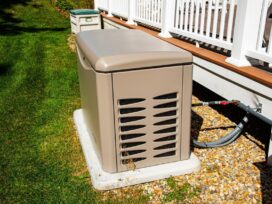
Indoor vs. Outdoor Paint: Why It Matters and How to Fix Mistakes
What to Do if Exterior Paint Was Used Indoors?
When it comes to painting a home, choosing the right type of paint is crucial. However, some homeowners might accidentally use exterior paint indoors, raising questions about health, safety, and durability. Here, we’ll cover the differences between indoor and outdoor paint, why it’s essential to use the correct type for each environment, and what you should do if you’ve mistakenly used exterior paint inside your home.
Understanding Indoor vs. Outdoor Paint
Indoor Paint
Interior paint is formulated to withstand cleaning, resist moisture, and be less toxic, making it safe for indoor air quality. It typically has fewer volatile organic compounds (VOCs), which means fewer harmful fumes, ensuring a safer and more comfortable environment inside the home.
Outdoor Paint
Exterior paint, on the other hand, is designed to endure various weather conditions. It has additives for UV protection, water resistance, and resistance to mildew, making it more resilient outdoors. However, these benefits come at a cost: exterior paint generally contains more VOCs, making it less ideal for indoor use.
Using Exterior Paint Indoors: Why It’s Not Recommended
While it might be tempting to use leftover exterior paint indoors, this can create several issues:
- Health Risks
Exterior paint’s higher VOC content can release more toxic fumes, which is particularly concerning in poorly ventilated spaces. These chemicals can linger for months, potentially causing respiratory issues, headaches, or allergic reactions. - Odor and Air Quality
The smell of exterior paint can be overwhelming indoors, taking weeks to dissipate. Unlike indoor paint, which is engineered to release fewer odors, exterior paint can disrupt indoor air quality. - Poor Aesthetic and Maintenance Issues
Exterior paint is designed to withstand rain and sun, not regular cleaning or indoor humidity. It may not adhere as well to indoor surfaces and could be more prone to chipping or discoloration over time.
What to Do if Exterior Paint Was Used Indoors
If you’ve already used exterior paint indoors, there are steps you can take to mitigate any potential issues:
- Improve Ventilation
Start by increasing airflow in the painted area. Open windows and doors and use fans to push out any fumes. This can help reduce indoor pollution and minimize odors. - Consider Applying a Sealing Coat
For added safety, consider applying a clear, water-based sealant over the exterior paint. This can help contain any VOCs and create a safer barrier between the paint and the indoor air. - Consult a Professional
If you’re concerned about the health effects or appearance of the paint, reaching out to a professional service like Bay-Valley Painting can be a great option. They can offer recommendations for sealing, priming, or repainting the affected areas with safe indoor products. - Plan to Repaint
Although it’s possible to leave the exterior paint as-is, it’s recommended to repaint the area with appropriate interior paint for long-term safety and durability.
According to Bay-Valley Painting: Why Choose the Right Paint?
Bay-Valley Painting experts advise that using the correct paint for each environment can significantly impact the longevity of your paint job and the safety of your home. Indoor and outdoor paints are formulated with specific purposes in mind, and their unique compositions are essential for proper function and health considerations.







